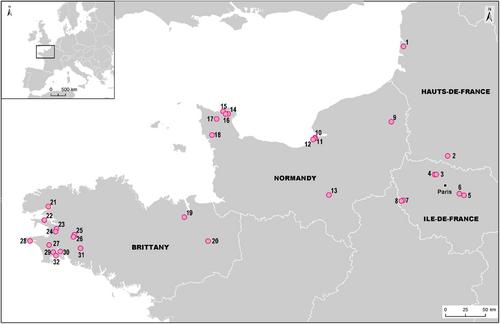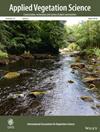Early response of herbaceous vegetation to Rhododendron ponticum subsp. baeticum invasion in European Atlantic forests
Abstract
Questions
Rhododendron ponticum subsp. baeticum is an invasive shrub of growing concern in continental Europe, but little is known about its impact on native plant communities. Here we ask: do environmental conditions differ between forest stands invaded by it and uninvaded stands? Do these differences correlate with R. ponticum's cover? Are these differences associated with differences in taxonomic and functional diversity of vascular plant species of the herb layer? Can these vegetation changes be explained by the sorting of certain life-history traits by R. ponticum-induced environmental changes?
Location
Several forests invaded by R. ponticum in the French Atlantic domain.
Methods
We recorded vegetation composition and a number of environmental variables in 400-m2 plots that were established in 64 paired forest stands (32 invaded vs 32 uninvaded). We compiled traits from existing databases. We computed several metrics of taxonomic and functional diversity. We compared environmental variables and diversity metrics between invaded and uninvaded stands. We used correlation and regression analyses to relate them with R. ponticum's cover. We ran RLQ and fourth-corner analyses to explore the relationships between R. ponticum invasion, environmental variables, species traits, and vegetation composition.
Results
Independent of its abundance, R. ponticum invasion was associated with lower light arrival at the forest floor and increased litter thickness. Concomitantly, species richness and diversity and trait diversity were reduced. The major driver of species assemblages was soil pH, which strongly interacted with the invasion gradient. R. ponticum did not sort species according to traits associated with shade tolerance and thick-litter tolerance. However, tree and shrub saplings were more abundant in invaded than uninvaded stands, at the expense of graminoid and fern species.
Conclusions
As R. ponticum becomes the dominant shrub, it exerts new selection forces on life-history traits of extant species, mostly via reduced light availability, increased litter thickness, and physical competition, thereby reducing taxonomic and functional diversity of the herb layer, without impeding tree and shrub self-regeneration, at least in the short term.


 求助内容:
求助内容: 应助结果提醒方式:
应助结果提醒方式:


